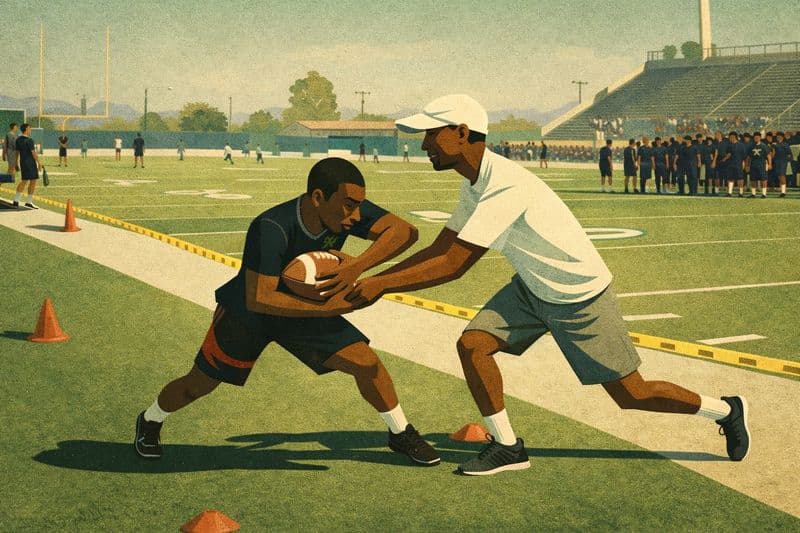A proper grip on your golf club is more than just a basic skill; it's the foundation of your entire golf swing. A good grip enhances your control and stability, impacting everything from your swing path to the power and accuracy of your shots.
To help you improve your golf grip, we surveyed our top golf coaches on TeachMe.To who’ve helped hundreds of students level up their game. Here are their top insights.
Understanding Grip Dynamics
Jesse Dolinar, a seasoned golf instructor with over ten years of experience, explains that understanding how the grip affects the club face is crucial. "The grip is your only point of contact with the club, so it directly influences the flight of the ball," he notes.
Jesse advises practicing with specific checkpoints for both hands to ensure that the grip pressure is neither too loose nor too tight. He emphasizes that these checkpoints should be revisited regularly during practice to ensure consistency and effectiveness in your grip as it evolves.
Knuckle Visibility and Hand Positioning
For newer players, understanding the visual cues of a proper grip can be transformative. Alex #ELSinkO Elcenko offers a straightforward method: "For right-handed players, when you hold the club in your left hand at chest height pointing up, you should see your first 2 knuckles.” He suggests adjusting your right hand so only one knuckle is visible and ensuring the thumb's pinch runs up the wrist, which helps maintain the club more securely in the fingers, minimizing wrist hinge on the takeaway.
Regular practice of alternating between weak and strong grips can help players feel the effects each has on the ball's flight path.
Trusting Your Grip
The initial discomfort of a new grip is a common challenge. Norman Katz 'Coach Norm' reassures players that this is normal. "A proper golf grip often feels unnatural at first. Trusting this new grip is crucial for its effectiveness," he states. Norman recommends starting with the Vardon Grip, practiced with a professional or through online tutorials, and emphasizes the importance of taking easy swings to get used to the grip before moving on to more complex aspects of the golf setup, such as posture and stance.
Practicing Grip Stability
Having a stable and consistent grip is essential, according to Jeff Heinemann, who has been teaching golf for a couple of years. Jeff suggests practicing your grip away from the course — in your home or office.
Spending just a few minutes each day adjusting and readjusting your grip can make the placement of the hands feel more natural. This method of repetition helps ingrain a solid and reliable grip that enhances the overall stability and squareness of the clubface at impact.
Integrating Grip into Overall Golf Mechanics
Lastly, understanding how the grip integrates with the rest of your golf swing is key to overall improvement. Steven Vargas highlights, "The grip is just the beginning. It affects every part of your swing from stance to follow-through."
He recommends learning how a small change, like a bowed left wrist, can fine-tune the entire swing, making it more efficient and effective. Steven encourages new players to be patient and open to learning, as mastering the grip can significantly accelerate overall golf skills development.
Mastering the basics of golf grip is essential for any golfer looking to improve their game. By understanding and practicing the tips provided by experienced coaches, players can ensure their grip contributes positively to their golf swing, leading to better control, power, and accuracy on the course.
Taking the first step towards significant improvement in your golf game starts with expert guidance. Visit TeachMe.To to find top-rated golf coaches near you in minutes.



